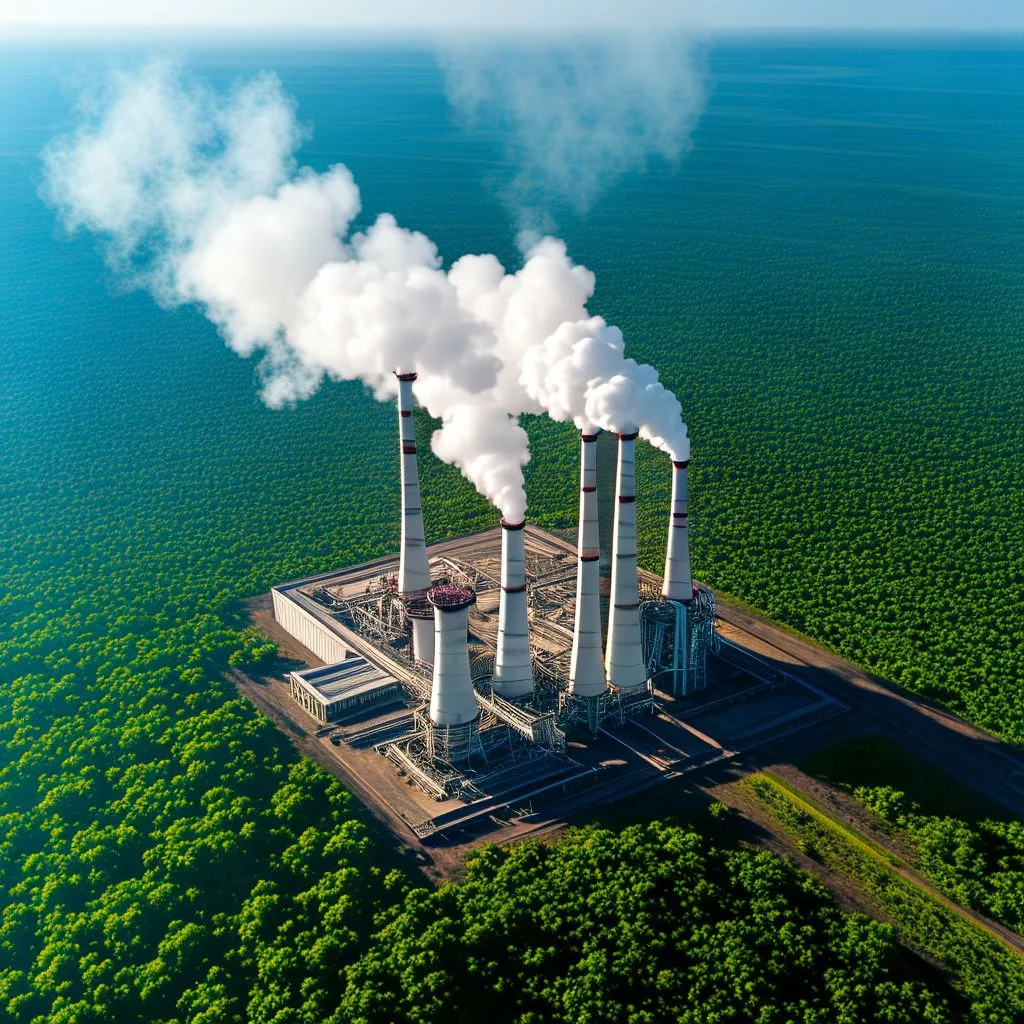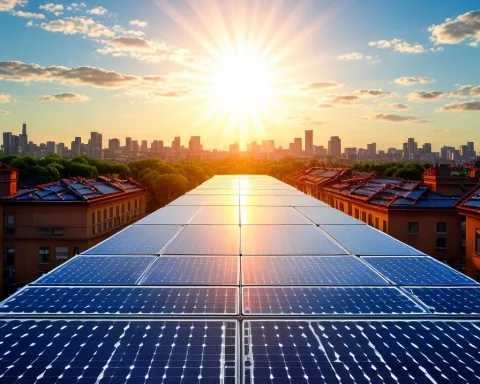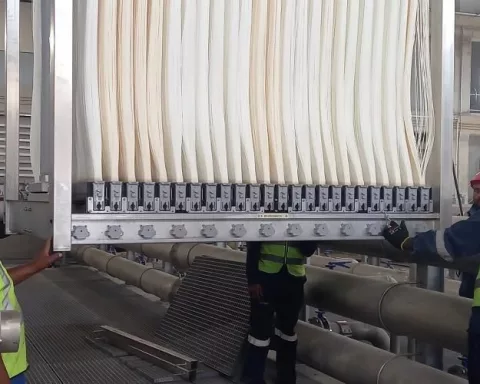The Kusile Power Station is a game-changer for South Africa’s energy needs, adding 800MW to the national grid and helping to improve power supply. This project is crucial for Eskom’s goal of boosting energy capacity by 2,500MW by 2025. Not only does Kusile help tackle ongoing power shortages, but it also uses advanced technology to clean the air, showing a commitment to protecting the environment. As this power station gets fully operational, it symbolizes hope and progress in creating a reliable and sustainable energy future for the country.
What is the significance of Kusile Power Station in South Africa’s energy transformation?
Kusile Power Station’s integration of Unit 6 adds 800MW to South Africa’s national grid, contributing to Eskom’s goal of 2,500MW by 2025. It enhances energy security, addresses power supply challenges, and employs innovative Wet Flue Gas Desulphurisation technology for environmental sustainability.
Expansion of National Grid Capacity
South Africa’s energy landscape has experienced a monumental shift with the successful integration of the Kusile Power Station Unit 6 into the national power grid. This new development, adding a significant 800MW, represents a crucial step towards Eskom’s ambitious target of incorporating 2,500MW of new capacity by March 2025. When all units are fully operational, Kusile will contribute a total of 4,800MW, solidifying its position as the largest infrastructure project in the country.
The completion of Unit 6 is more than just a milestone for the Kusile project; it aligns perfectly with Eskom’s broader strategy to improve energy security amidst ongoing challenges within the electricity supply ecosystem. Additionally, Unit 4 of the Medupi Power Station, Kusile’s counterpart, is set to resume operations by April 2025, adding another 800MW following a prolonged outage due to a generator stator failure. The nearing completion of these major projects signals a promising revitalization of South Africa’s power infrastructure, which is crucial given the recent electricity supply constraints.
The integration of Kusile’s final unit into the grid represents a significant boost to the nation’s energy capacity. This development is not just about meeting immediate power needs; it also sets a foundation for long-term energy stability. As South Africa battles with frequent power outages and load-shedding, the additional capacity from Kusile provides much-needed relief and paves the way for a more reliable power supply.
Pioneering Environmental Sustainability
Kusile Power Station is notable not only for its scale but also for its pioneering approach to environmental sustainability. The power station employs Wet Flue Gas Desulphurisation (WFGD) technology, an innovative method that marks the first implementation of its kind in both South Africa and the African continent. This advanced technology ensures compliance with stringent air quality standards and aligns with global best practices aimed at reducing sulphur dioxide emissions, a major contributor to air pollution.
The significance of this advancement is profound. By adopting WFGD technology, Kusile sets a new benchmark for coal-fired power stations in South Africa and potentially across Africa. This move is particularly important given the country’s historical reliance on coal, which has drawn criticism due to the associated environmental and health impacts. The implementation of this technology at Kusile demonstrates a commitment to balancing industrial progress with environmental stewardship.
Furthermore, the adoption of WFGD technology places South Africa on the global map as a nation taking proactive steps to reduce industrial pollution. This aligns with international environmental standards and showcases the country’s dedication to sustainable industrial practices. As nations worldwide grapple with the urgent need to address climate change, South Africa’s efforts at Kusile offer valuable insights and a model for other countries to follow.
Addressing Power Supply Challenges
The urgency of expanding power capacity in South Africa cannot be overstated. “Eskom is at a critical point returning megawatts to the grid as we are currently in a constrained state,” stated Bheki Nxumalo, Eskom’s Group Executive for Generation. His statement highlights the pressing need for increased power capacity, especially given the frequent load-shedding episodes that have disrupted daily life and economic activities across the nation.
Eskom’s Group Chief Executive, Dan Marokane, echoed Nxumalo’s sentiments, emphasizing the crucial role of Kusile Unit 6 in stabilizing the nation’s electricity supply. “Meeting the targets we set in the Generation Recovery Plan underscores our determination to deliver new capacity, enhance generation performance, support economic growth, and ultimately deliver a more sustainable energy future,” Marokane asserted. His comments reaffirm Eskom’s commitment to avoiding a recurrence of the relentless load-shedding experienced in 2023, focusing instead on establishing a more reliable power system for the nation.
South Africa’s ongoing energy challenges are rooted in years of instability in electricity supply, exacerbated by aging infrastructure, inadequate maintenance, and financial mismanagement within Eskom. The Kusile and Medupi projects represent a beacon of hope amidst this turmoil. Despite facing their own set of obstacles, including technical failures, financial overruns, and delays, the perseverance in pushing these projects towards completion highlights a resilient stride towards overcoming the nation’s energy hurdles.
A Broader Narrative of Resilience and Innovation
Kusile’s integration into the grid also aligns with a broader global movement towards cleaner energy. As the world increasingly acknowledges the urgent need to address climate change, Kusile’s WFGD technology places South Africa among the nations taking proactive steps to reduce industrial pollution. This alignment with international environmental standards showcases South Africa’s commitment to sustainable industrial practices and positions the country as a leader in environmental innovation.
Historically, South Africa’s reliance on coal-fired power stations has drawn significant criticism due to the environmental and health impacts associated with emissions. The implementation of WFGD at Kusile sets a new standard for coal-fired plants, potentially serving as a model for future projects both in South Africa and across the continent. This technological advancement reflects a blend of industrial progress and environmental stewardship, a dual objective that many nations strive to balance.
The significance of these developments extends beyond technical achievements. They symbolize a broader narrative of resilience and innovation in the face of adversity. Eskom, despite its challenges, demonstrates a capacity for adaptation and progress. This reflects a broader societal push towards overcoming infrastructural and systemic challenges through innovation and determination.
Global Implications and Future Prospects
In the context of global energy trends, South Africa’s strides in enhancing its power infrastructure through projects like Kusile and Medupi are noteworthy. The world closely observes as countries navigate the transition towards more sustainable and reliable energy systems. South Africa’s efforts, particularly with the introduction of advanced technologies like WFGD, contribute valuable insights and lessons to this global discourse.
The integration of Kusile Power Station Unit 6 marks a pivotal advancement in South Africa’s energy infrastructure. This development not only addresses immediate power supply challenges but also aligns with broader goals of environmental sustainability and technological innovation. As South Africa continues to navigate its energy landscape, projects like Kusile and Medupi stand as testaments to the potential for progress and resilience in the face of daunting challenges.
In conclusion, the successful integration of Kusile Power Station Unit 6 into the national grid represents a significant milestone in South Africa’s energy journey. This achievement underscores the importance of innovative technologies and strategic planning in addressing the nation’s energy challenges. As the country moves forward, the lessons learned and the successes realized from these projects will undoubtedly contribute to a more stable, sustainable, and prosperous energy future for South Africa.
“`markdown
What is the significance of Kusile Power Station in South Africa’s energy transformation?
Kusile Power Station plays a vital role in South Africa’s energy landscape by adding 800MW to the national grid through the integration of Unit 6. This addition is a key component of Eskom’s goal to boost energy capacity by 2,500MW by 2025. The project enhances energy security, addresses power supply challenges, and incorporates innovative Wet Flue Gas Desulphurisation technology to promote environmental sustainability.
How does Kusile Power Station contribute to improving energy security in South Africa?
The successful integration of Kusile’s Unit 6 into the national grid is a crucial step toward addressing South Africa’s ongoing power supply challenges. As the country deals with frequent load-shedding and electricity supply constraints, the additional 800MW from Kusile provides much-needed relief and lays the groundwork for a more reliable power supply moving forward.
What innovative technology is being used at Kusile Power Station?
Kusile Power Station employs Wet Flue Gas Desulphurisation (WFGD) technology, which is the first of its kind in South Africa and on the African continent. This advanced technology helps to reduce sulphur dioxide emissions, ensuring compliance with stringent air quality standards and aligning with global best practices in pollution reduction.
How will Kusile Power Station impact the environment?
The implementation of WFGD technology at Kusile marks a significant commitment to environmental stewardship. By reducing harmful emissions typically associated with coal-fired power plants, Kusile sets a new benchmark for environmental sustainability in South Africa. This initiative positions the country as a leader in adopting cleaner industrial practices, which is essential in the fight against climate change.
What are the broader implications of Kusile Power Station for South Africa’s energy future?
Kusile Power Station represents a broader narrative of resilience and innovation in South Africa’s energy sector. As the country navigates its energy challenges, the advancements seen in Kusile and similar projects contribute valuable insights into building a sustainable energy future. The lessons learned here could serve as a model for future energy projects both domestically and internationally.
What are the future prospects for South Africa’s energy infrastructure?
With ongoing projects like Kusile and the anticipated return of Unit 4 from the Medupi Power Station, South Africa is poised for a revitalization of its energy infrastructure. These projects signify a commitment to enhancing power generation capabilities and addressing historical challenges faced by Eskom. As these units become fully operational, they represent a significant step toward achieving a stable and sustainable energy landscape for the nation.
“`












